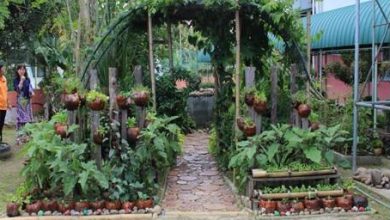The Ocra: [Cultivation, Care, Substrate, Irrigation and Pests]
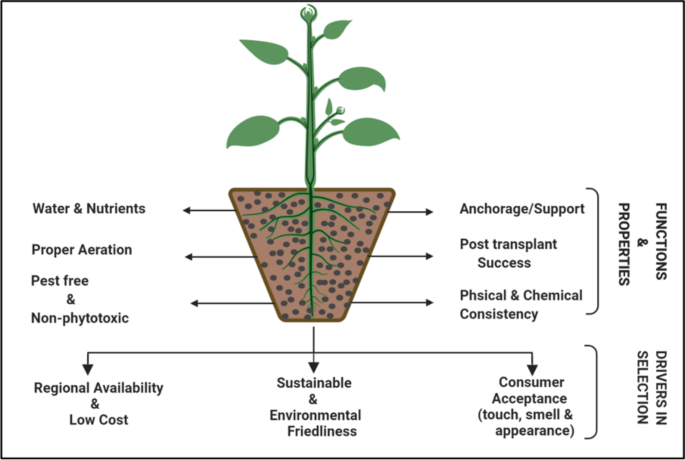
The okra or also known as okra (Abelmoschus esculentus), native to Africa and related to the hibiscus.
This edible green seed quickly became popular as a thickener for stews.
As a crop, okra thrives in any climate where corn grows.
The fast-growing, large – flowered plants reach between half a meter and up to 6 meters in height, depending on where and how they are grown.
Varieties with colorful stems and leaves, such as Burgundy, also make attractive garden borders.
Important points when sowing okras
 When? Ideally in spring. Avoid in winter and autumn if it is in very cold areas.
When? Ideally in spring. Avoid in winter and autumn if it is in very cold areas.- Where? In full sunlight. They require a lot of light.
- How do we prepare the land? Soil preferably acid. Withwell removed manure.
- How do we water? Ideal drip irrigation.
- How often do we water? In summer, they will need a lot of water. The more heat, the more water. Every two days when the days have very high temperatures.
- How do we harvest? It is usually ready 2 months after sowing. We will verify the size of theokra plant.
- Plagues and diseases? It is attacked by red spiders, aphids, whiteflies and also diseases such as nematodes and powdery mildew.
Characteristics of okra
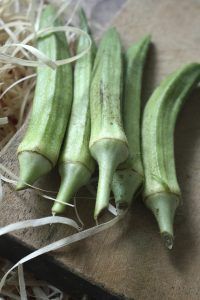 The species is a perennial plant, often grown as an annual in temperate climates, typically reaching about 2 meters (6.6 ft) in height. As a member of the Malvaceae, it is related to species such as cotton, cocoa, and hibiscus.
The species is a perennial plant, often grown as an annual in temperate climates, typically reaching about 2 meters (6.6 ft) in height. As a member of the Malvaceae, it is related to species such as cotton, cocoa, and hibiscus.
The leaves are 10-20 centimeters long and wide, palmately lobed with 5-7 lobes.
The flowers are 4-8 centimeters in diameter, with five white to yellow petals, often with a red or purple spot at the base of each petal. Pollens are spherical with approximately 188 microns in diameter.
The fruit is a capsule up to 18 centimeters long with a pentagonal cross-section, containing numerous seeds.
Abelmoschus esculentus is cultivated in all tropical and warm regions, for its fibrous fruits or pods that contain round, white seeds.
It is one of the most heat and drought tolerant plant species in the world and tolerates heavy clay soils and intermittent moisture, but frost can damage pods.
In cultivation, the seeds are soaked overnight before planting 1-2 centimeters deep. It prefers a soil temperature of at least 20 °C for germination which occurs between six days (soaked seeds) and three weeks. Seedlings require a lot of water.
The seed pods quickly become fibrous and woody and, to be edible as a vegetable, must be harvested when immature, usually within a week of pollination.
Okra is available in two varieties, green and red. Red okra has the same flavor as the more popular green okra and only differs in color. When cooked, red okra pods turn green.
The most common disease affecting the okra plant is whorl wilt, which often causes a yellowing and wilting of the leaves. Other diseases include powdery mildew in dry tropical regions, leaf spot, and root-knot nematodes.
When to sow okra?
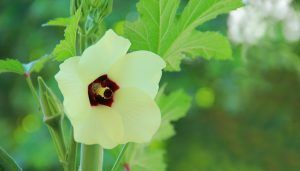 You can start okra seeds indoors in pots with good soil and peat moss in full light 3-4 weeks before the last spring frost.
You can start okra seeds indoors in pots with good soil and peat moss in full light 3-4 weeks before the last spring frost.
In warmer areas, you can also start okra directly in your garden or orchard 3-4 weeks before the last spring frost, as long as you cover the plants with a cold frame or grow tunnel until the weather warms. completely hot.
Make sure the canopy is half a meter high so the plants have room to grow.
If you don’t start okra planting early, wait until the weather is more stable and warm.
Where to grow okra?
As a warm-weather crop, okra thrives in full sun.
Okra adapts to and grows in most soils, although it does best in soil that is well-drained and rich in organic matter.
The soil should ideally be acidic, with a pH between 5.8 and 7.0.
How to plant okra in your garden step by step
Planting okra is simple.
- Prepare the land where you are going to plant your okras. It is important that you remove all the weeds and stones that may be.
- Mix with organic matter such as well decomposed manure the soil.
- Measure the pH of it to verify that it is rather acidic.
- Prepare the furrows where you are going to plant your okra seedlings or directly with the seeds.
- Leave a minimum space of 40 centimeters between each plant. He thinks that ocras, in favorable conditions, grow considerably.
- We recommend drip irrigation. Once you have it ready, water considerably that same day.
Care you should do to the okra
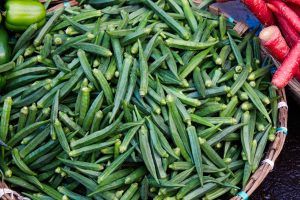 Remove weeds when plants are young, then cover with mulch to prevent more weeds from growing. Apply a layer of mulch about 5-10 centimeters high.
Remove weeds when plants are young, then cover with mulch to prevent more weeds from growing. Apply a layer of mulch about 5-10 centimeters high.- Plants should be covered on their side with 10-10-10, aged manure or rich compost (½ pound per 25 feet of row). You could also apply a balanced liquid fertilizer monthly. Learn more about the needs of the soil and its preparation before growing okras.
- When the seedlings are about 8 inches tall, prune the plants so that they are at least 12 inches apart, if they aren’t already .
- Keep the plants well watered during the summer months; 5 centimeters of water per week is ideal, but use more if you are in a hot and/or arid area.
- After the first harvest, remove the lower leaves to help speed production.
How to harvest okra
- The first harvest will be ready about 2 months after sowing.
- Harvest the okras when they are about 20 centimeters long. Harvest them every two days.
- Cut the stem just above the cap with a knife; if the stem is too hard to cut, the pod is probably too old and should be removed.
- Wear gloves and long sleeves when cutting okra because most varieties are covered in small spines that irritate the skin, unless you have a spineless variety. Do not worry: this irritation does not occur when eating them.
Pests and diseases that affect okra
Red spider
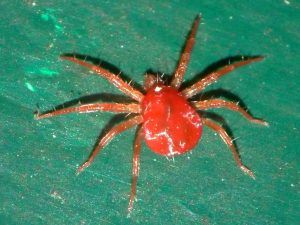 The leaves become mottled, pale and cobwebbed, on which the mites can be clearly seen; the leaves also drop prematurely.
The leaves become mottled, pale and cobwebbed, on which the mites can be clearly seen; the leaves also drop prematurely.
How to fight them: they thrive in hot and dry conditions, it is interesting to spray with neem oil or potassium soap.
White fly
Tiny whiteflies suck the sap and excrete the sticky «honeydew» onto the plant, encouraging sooty mold growth.
How to combat them: Use biological control or sticky traps. We recommend the use of neem oil or potassium soap.
aphids
Look for greenfly colonies on the tips of soft plant shoots or on leaves. They suck sap and excrete sticky honeydew, encouraging the growth of black sooty molds.
How to fight them: Use your finger and thumb to crush aphid colonies or use biological control. We recommend the use of neem oil or potassium soap.
verticillium wilt
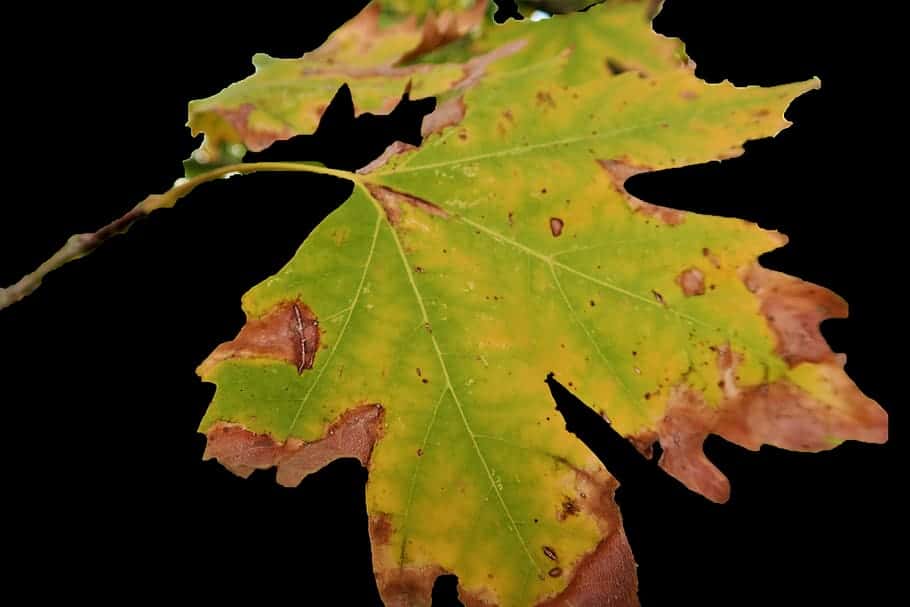 Verticillium or Verticillium wilt is a common soil fungus that thrives in temperate climates around the world and can be present in the soil for decades.
Verticillium or Verticillium wilt is a common soil fungus that thrives in temperate climates around the world and can be present in the soil for decades.
Verticillium wilt overwinters in the soil as dormant mycelium or tiny dormant black structures called microsclerotia, waiting for favorable conditions to return.
They enter damaged plant tissue through the roots and multiply. Many common weeds, such as dandelions and weeds, can be Verticillium host species.
Verticillium wilt is a disease that affects more than 350 species of eudicolous plants. It is caused by six species of Verticillium fungi: Verticillium dahliae, Verticillium albo-atrum, Verticillium longisporum, Verticillium nubilum, Verticillium theobromae, and Verticillium tricorpus.
Many plants with significant economic weight are susceptible, such as cotton, tomatoes, potatoes, oilseed rape, aubergines, peppers, and ornamental plants, as well as others in natural vegetation communities.
Many species and cultivars of eudicots are resistant to the disease, and all monocots, gymnosperms, and ferns are immune. To know more: Verticillium wilt in the Orchard: What is it? How do we identify it?


